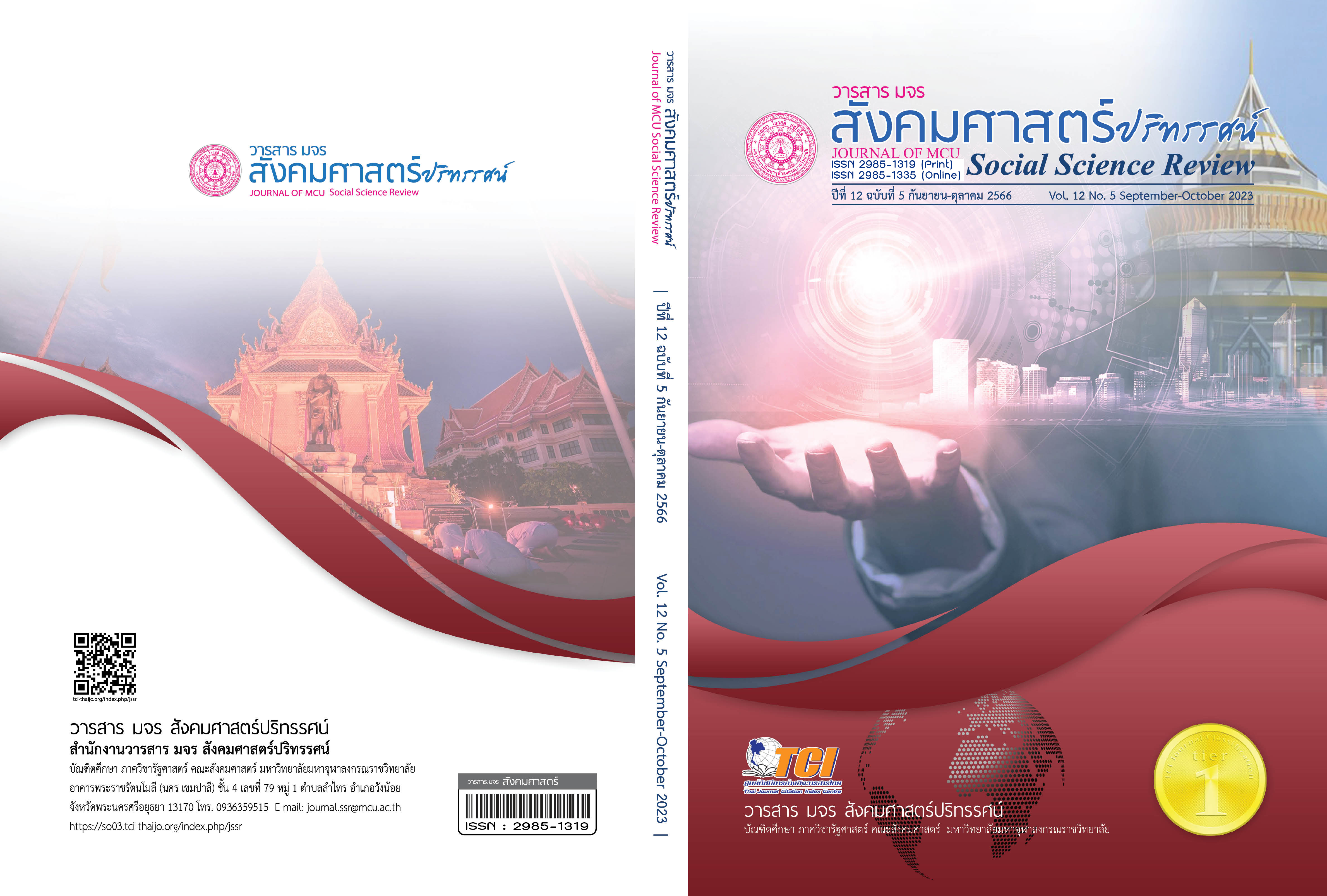THE EFFECT OF NEW NORMAL MENTAL HEALTH ENHANCEMENT MODEL TOWARDS NEXT NORMAL FOR YOUTHS
Keywords:
Group counseling program, Mental health, YouthsAbstract
This research aimed to develop the new normal mental health enhancement model towards the next normal for youths using the integrative group counseling program. It was the experimental research that the sample group had a mean score of mental health under percentile 25, and the voluntary youths were interviewed. The sample group was 60 youths aged 15-25 years old in Ban Du Sub-district, Muang District, Chiang Rai Province. A questionnaire about the youth’s mental health was used to collect the data and compare the mean score before and after participating in the program and during the follow-up period using One -Way ANOVA Repeated Measurement method. Pair comparison and Post Hoc Test of the mean of youth’s mental health in overall and by aspect were analyzed using the Least Significant Differences (LSD) method.
Results illustrated that the mean of causal factors of family relationship, self-esteem, life goal, and mental health during the follow-up period and after the experiment was higher than before the experiment. Further, the mean of the follow-up period was higher than after the experiment with a statistical significance of .01. The mean difference before, after, and during the follow-up period had a statistical significance. It demonstrated that the new normal mental health enhancement model towards the next normal for youths was useful and effective for enhancing youth’s mental health.
References
บีบีซี นิวส์. (2564). ฆ่าตัวตาย : ตัวเลขคนไทยปลิดชีพตัวเองไต่ระดับขึ้นระหว่างการระบาดของโควิด-19. สืบค้นเมื่อวันที่ 3 ตุลาคม 2565, จาก www.bbc.com/thai/thailand-57721370
ปริทรรศ ศิลปะกิจ และพันธุ์นภา กิตติรัตนไพบูลย์. (2560). แนวโน้มและปัจจัยที่มีผลต่อระดับสุขภาพจิตคนไทย: การสำรวจระดับชาติ ปี พ.ศ.2561. วารสารสุขภาพจิตแห่งประเทศไทย, 28(2), 121-135.
เยาวนารถ พันธุ์เพ็ง. (2564). การส่งเสริมสุขภาพของวัยรุ่นโดยใช้สื่อสังคมออนไลน์. วารสารสหศาสตร์ศรีปทุม ชลบุรี, 7(1), 21-29.
รมณภัทร กตตน์วงศกร. (2557). การศึกษาผลการพัฒนาทักษะชีวิตของนักเรียนชั้นประถมศึกษาปีที่ 6 โรงเรียนบางจาก (โกมลประเสริฐอุทิศ) สำนักงานเขตภาษีเจริญ กรุงเทพมหานคร (สารนิพนธ์การศึกษามหาบัณฑิต สาขาบริหารการศึกษา). กรุงเทพฯ: มหาวิทยาลัยศรีนครินทรวิโรฒ.
วงศกร สมัยเอี่ยม และคณะ. (2565). ผลของโปรแกรมการส่งเสริมสุขภาพโดยประยุกต์ตามทฤษฎีแรงจูงใจเพื่อป้องกันโรคต่อพฤติกรรมการจัดการความเครียดของนักเรียนชั้นมัธยมศึกษาปีที่ 1. วารสารมหาวิทยาลัยคริสเตียน, 28(2), 53-64.
สำนักงานสถิติแห่งชาติ. (2562). จำนวนประชากรจังหวัดเชียงราย. กรุงเทพฯ: สำนักงานสถิติแห่งชาติ.
สำนักงานสภาพัฒนาการเศรษฐกิจและสังคมแห่งชาติ. (2562). เยาวชนไทยเสี่ยงเป็นภาวะซึมเศร้า-ฆ่าตัวตายแนวโน้มสูงขึ้น. กรุงเทพฯ: สำนักงานสภาพัฒนาการเศรษฐกิจและสังคมแห่งชาติ.
สุปรีชา แก้วสวัสดิ์ และคณะ. (2562). การพัฒนาแนวทางการสร้างเสริมสุขภาพของเยาวชน ตำบลเกาะลิบง อำเภอกันตัง จังหวัดตรัง. วารสารวิชาการสาธารณสุข, 28(2). 31-42.
Clark, D. (2005). Catalogue of parametrictests. Encyclopedia of Statistics in Behavioral Science, 1, 207-227.
Golemiewski, R.T., & Blumberg, A. (1976). Learning and Change in Groups. London: Penguin Books.
Kelly, H.L. (2007). Randomized Clinical Effectiveness Trial of Nurse-Administered Small-Group Cognitive Behavior Therapy for Persistent Insomnia in General Practice. Sleep, 30(5), 574-584.
Lubin, B., & Eddy, W. (1970). The laboratory training model: rationale method and some thoughts for the future. International Journal of Group Psychotherapy, 20(3), 305-339.
Mawn, L. (2016). Getting it right! Enhancing youth involvement in mental health research. Health Expect, 19(4), 908 – 919.
McGorry, P.D., Mei, C., Chanen, A., & Hodges, C. (2022). Designing and scaling up integrated youth mental health care. World Psychiatry, 21(1), 61-76.
Sale, J. (2022). How innovative solutions can support and improve young people's mental health. Geneva: Word Economic Forum.
Stevens, M.H. (2002). Resource quantity, not resource heterogeneity, maintains plant diversity. Ecology Letters, 5(3), 420 – 426.
Taylor, A., et al. (2022). Defining research priorities for youth public mental health: reflections on a coproduction approach to transdisciplinary working. Health Research Policy and Systems, 20(1), 1-14.
Thomas, N. (2012). A randomised controlled trial of acceptance-based cognitive behavioural therapy for command hallucinations in psychotic disorders. Behaviour Research and Therapy, 50(2), 110-121.
Downloads
Published
How to Cite
Issue
Section
License
Copyright (c) 2023 Journal of MCU Social Science Review

This work is licensed under a Creative Commons Attribution-NonCommercial-NoDerivatives 4.0 International License.
In order to conform the copyright law, all article authors must sign the consignment agreement to transfer the copyright to the Journal including the finally revised original articles. Besides, the article authors must declare that the articles will be printed in only the Journal of MCU Journal of Social Sciences. If there are pictures, tables or contents that were printed before, the article authors must receive permission from the authors in writing and show the evidence to the editor before the article is printed. If it does not conform to the set criteria, the editor will remove the article from the Journal without any exceptions.





